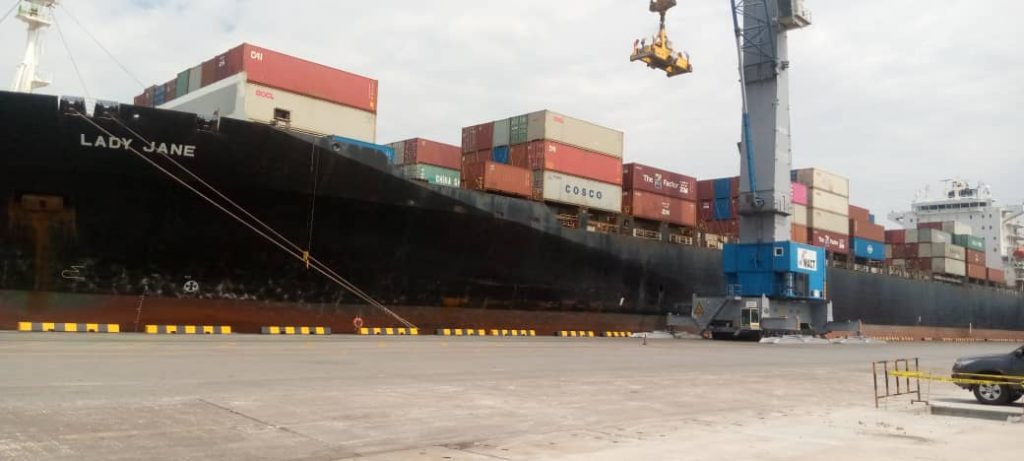World Bank Forecasts Slower Trade Growth Through 2030

MV LADY JANE
(TME) The World Bank projects that trade growth is on track to slow over the decade to come as global economic growth slackens. The lasting effects of the COVID-19 pandemic, the Russian invasion of Ukraine and rising interest rates have put the brakes on economic activity, and trade growth through 2030 is expected to slow by 0.4 percentage points per year (relative to the previous decade). A long-term trend towards reshoring or nearshoring supply chains will also have a reducing effect on trade, according to the World Bank’s researchers.
In a new report released Monday, the agency warned that nearly all the economic forces that propelled global growth since the 1990s are fading, and that global potential GDP growth is on track to drop by a third this decade when compared with 2000-2010. (Growth will still occur, but less rapidly, particularly in developing economies.)
“A lost decade could be in the making for the global economy,” said Indermit Gill, the World Bank’s Chief Economist and Senior Vice President for Development Economics. “The ongoing decline in potential growth has serious implications for the world’s ability to tackle the expanding array of challenges unique to our times—stubborn poverty, diverging incomes, and climate change.”
Gill called for a concerted effort to turn around this slowdown. By incentivizing private investment, national economies and international institutions could accelerate the rate of economic growth from 2.2 to 2.9 percent, her team found.
“We owe it to future generations to formulate policies that can deliver robust, sustainable, and inclusive growth,” said Ayhan Kose, a lead author of the report and Director of the World Bank’s Prospects Group.
Among the recommended policy tools are infrastructure investments, promotion of the services sector, and cuts in the cost of trade. Trade costs can be as much as 100 percent of the value of the traded goods, depending on the distance, route and regulatory regime. “Countries with the highest shipping and logistics costs cound cut their trade costs in half by adopting the trade-facilitation and other practices of countries with the lowest shipping and logistics costs,” concluded the World Bank.
If a trade growth slowdown does occur, it would be damaging to developing economies but a potential accelerant for transport decarbonization, since avoided shipping activity translates to avoided energy demand. The rate of ton-mile growth is one of the key factors in predicting long-term trends in shipping emissions, and one of the greatest challenges: the larger the maritime industry gets, the more tough-to-source green fuel it will need. Assuming the continuation of current trends, global maritime cargo volume is on track to triple by 2050, with a corresponding increase in energy demand.
*Culled from The Maritime Executive
In a new report released Monday, the agency warned that nearly all the economic forces that propelled global growth since the 1990s are fading, and that global potential GDP growth is on track to drop by a third this decade when compared with 2000-2010. (Growth will still occur, but less rapidly, particularly in developing economies.)
“A lost decade could be in the making for the global economy,” said Indermit Gill, the World Bank’s Chief Economist and Senior Vice President for Development Economics. “The ongoing decline in potential growth has serious implications for the world’s ability to tackle the expanding array of challenges unique to our times—stubborn poverty, diverging incomes, and climate change.”
Gill called for a concerted effort to turn around this slowdown. By incentivizing private investment, national economies and international institutions could accelerate the rate of economic growth from 2.2 to 2.9 percent, her team found.
“We owe it to future generations to formulate policies that can deliver robust, sustainable, and inclusive growth,” said Ayhan Kose, a lead author of the report and Director of the World Bank’s Prospects Group.
Among the recommended policy tools are infrastructure investments, promotion of the services sector, and cuts in the cost of trade. Trade costs can be as much as 100 percent of the value of the traded goods, depending on the distance, route and regulatory regime. “Countries with the highest shipping and logistics costs cound cut their trade costs in half by adopting the trade-facilitation and other practices of countries with the lowest shipping and logistics costs,” concluded the World Bank.
If a trade growth slowdown does occur, it would be damaging to developing economies but a potential accelerant for transport decarbonization, since avoided shipping activity translates to avoided energy demand. The rate of ton-mile growth is one of the key factors in predicting long-term trends in shipping emissions, and one of the greatest challenges: the larger the maritime industry gets, the more tough-to-source green fuel it will need. Assuming the continuation of current trends, global maritime cargo volume is on track to triple by 2050, with a corresponding increase in energy demand.
*Culled from The Maritime Executive





